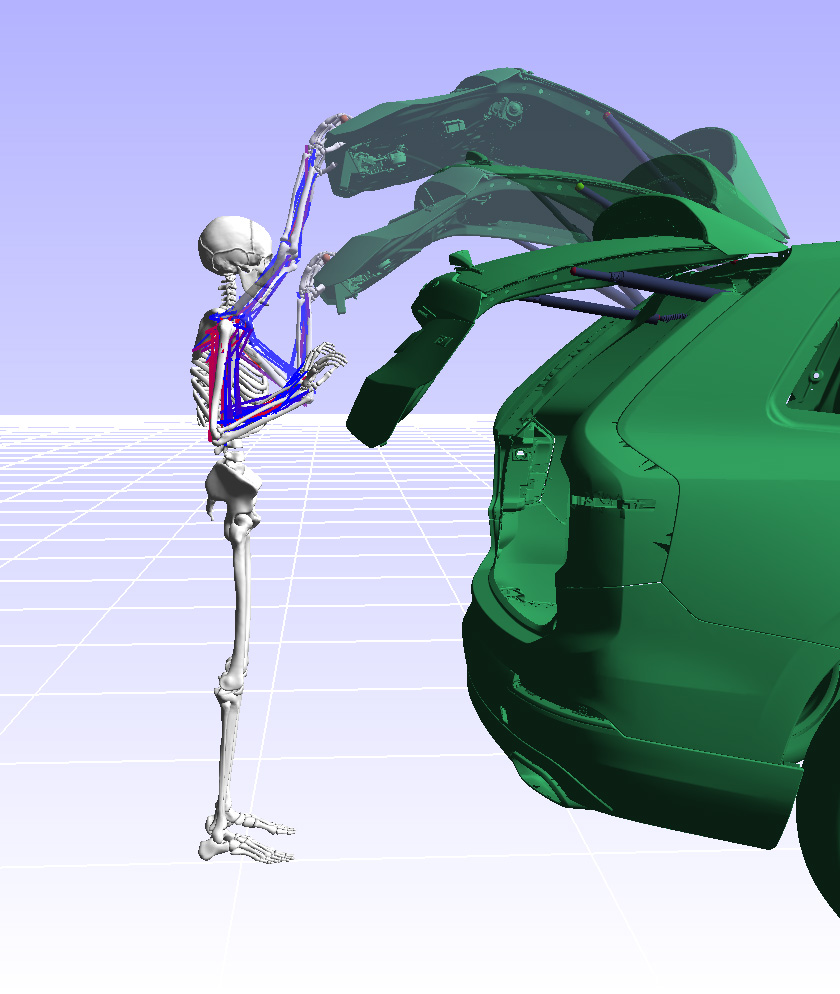Numerous high-end products are still – and will probably continue to be – manufactured by people. Wherever skill, intelligence and experience are essential for high product quality, people are involved. This applies not only to manufacturing, but also to the use of products such as vehicles, mobile machinery, sports or medical technology. How a person solves a control or movement task has a significant influence on the physical strain – and therefore on comfort, safety and quality.
The digitalization of the product development process requires suitable simulation tools. On the one hand, models are needed that depict human work activities so realistically that the influence of the »human factor« on product quality can be reliably assessed. The ergonomic design of workstations also plays an important role: it helps experienced employees to stay healthy – and at the same time contributes to ensuring product quality.
On the other hand, simulation tools are needed that realistically depict people as operators of products in order to optimize their efficiency and ease of use. Digital evaluations reduce the number of physical prototypes required and thus speed up the development process.

